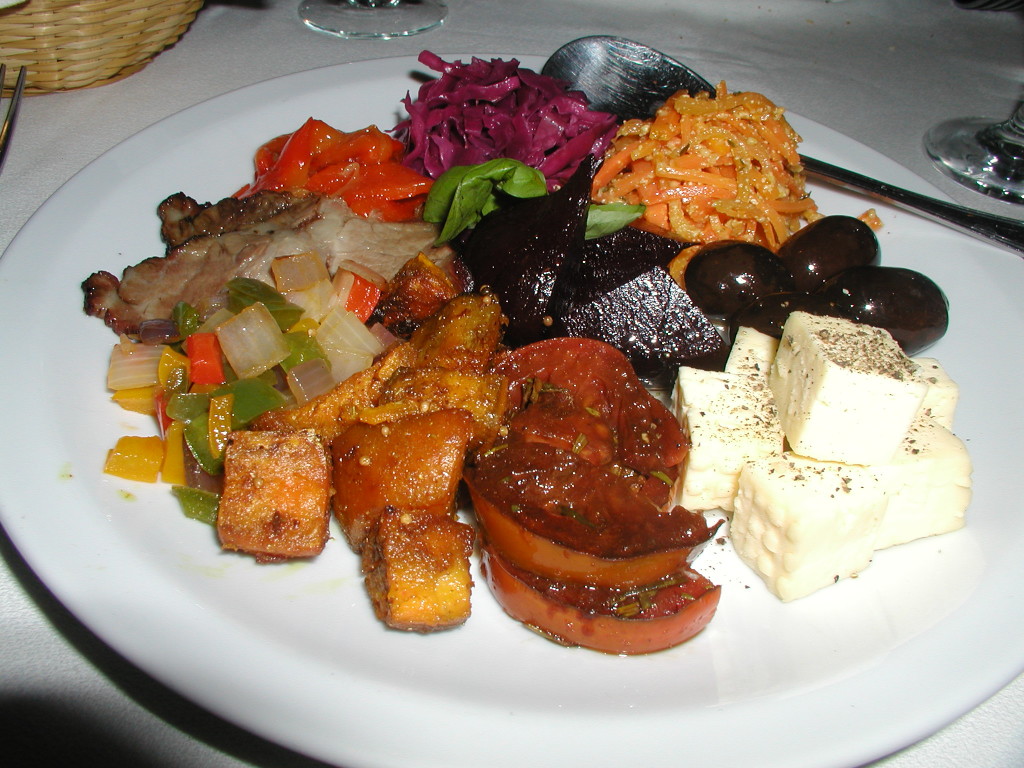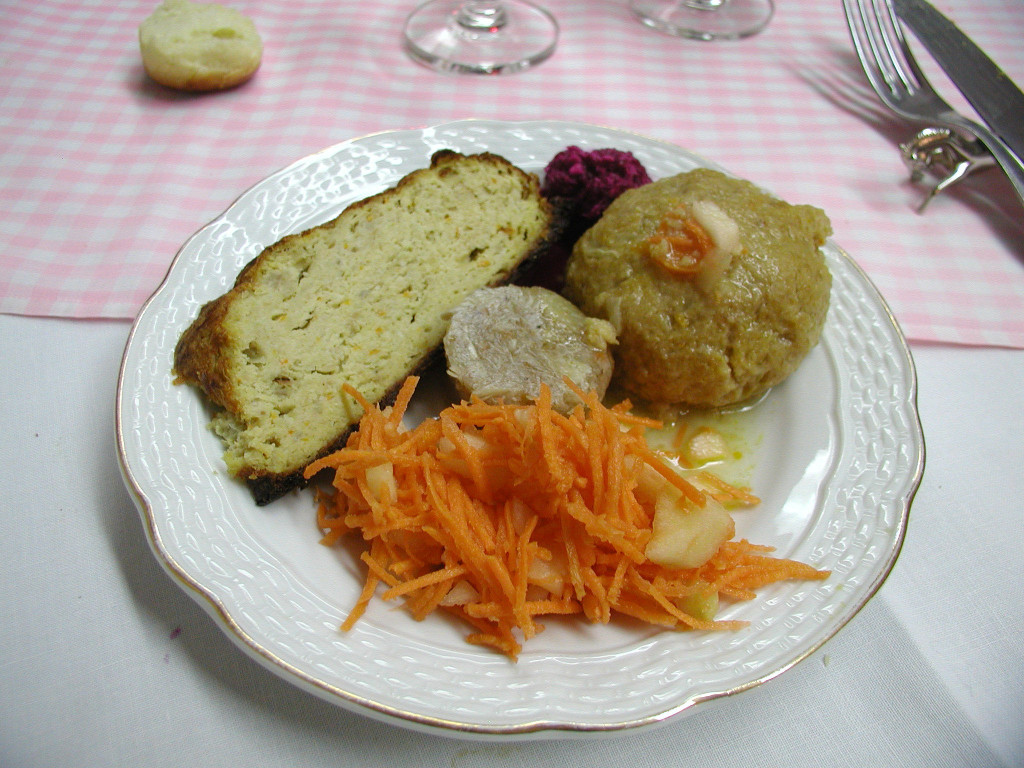April 2007, page 62
Argentina for beginners
Palermo – Chico, Hollywood, SoHo, even Las Cañitas – Recoleta, Centro, San Telmo, maybe a side trip into that two block stretch of La Boca. You’ve read your guidebook and that’s the circuit. Museums, cafes, statues, fountains… that’s what you came here to see, right? You tried out the subway once, maybe even a rocket ride on a colectivo just to say you’ve been on the buses.
You walked in a park, clutching your bag and camera close to you, avoiding those desperate thieves that you read about somewhere in parks in South America. You’re ready to try something a little more adventurous. Sure you can take a day trip to an estancia or Colonia, but how about somewhere to eat that doesn’t require an hour or two of travel?

Francisco “Paco” Urondo was a poet, journalist, and militant politician, born in 1930, until his death in 1976 at the hands of the then current Argentine regime. Reading poetry in a new language is possibly the most difficult undertaking of the learning process, though, luckily, it’s not a prerequisite for dining at Urondo, Beauchef 1204 (corner of Estrada), 4922-9671, run by his son and nephew. If you never leave the touristy neighborhoods for anywhere else, you should for this place. Beauchef, is not pronounced in the French fashion, it’s pronounced “beya-oo-chef” – or your cab driver will have no idea where you’re going. The restaurant is a small venue, located in the quiet residential neighborhood of Parque Chacabuco. It’s only open Wednesday through Saturday evenings and I do recommend reservations for dining as it’s a popular spot with food folk in the know and locals. It’s a very comfortable room, with reasonably spacious tables, high ceilings, and while minimalist in decor, somehow just right. The open kitchen is semi-hidden by a high counter separating it from the dining room, which cuts down on the clatter from the cooking, and allows for a feeling of activity and movement from the kitchen, without having to see the nitty-gritty of every move. The menu is short, changes regularly, and is an amazingly multi-ethnic fusion of flavors, taking Argentine classics and giving them the zip of Southeast Asia, India, Africa, Europe… pretty much the rest of the world. In the hands of many chefs, multi-ethnic fusion food is a recipe for disaster. Combining two cuisines can be hard enough as it is, so it’s impressive to find someone who can take the range of flavors offered by the global palate and forge them into something that not only works, but works brilliantly. The wine list is an interesting selection of mostly not so well known labels, clearly selected to work with the food, including some older wines, and occasionally the (“gasp”) inclusion of wines from outside of Argentina.
This review was cut from the final published version for unknown reasons:
Everyone seems surprised when I mention that there’s a Chinatown, Barrio Chino, in Buenos Aires. What gets more surprised looks is when I mention that my favorite place there isn’t a Chinese restaurant, nor even that of some other Asian cuisine. It’s easy to forget, or simply not to know, when you’re wandering through a neighborhood like Barrio Chino that it hasn’t always been predominately Chinese. Juanita Posternak is definitely not Chinese had a nice little house along Arribeños years before the first Taiwanese market opened in 1985. Before the first store of the soon to emerge Barrio Chino opened its doors, she opened, or closed, the doors – 23 years ago, to Mis Raíces, Arribeños 2148, 4784-5100, www.restaurantmisraices.com.ar, was born. And those “roots” are in the Eastern European Jewish community. Mis Raíces is open, as Ms. Pasternak quips regularly, “from Monday to Monday”. She’ll feed people dinner whenever they want to come, seven days a week – as long as it’s at 9:00 and when she decides to say yes. By reservation only, don’t just go ringing the bell on the front door. But make the call or send the e-mail, and don’t eat anything the rest of the day before going. Climb the wide steps to the main floor and find yourself in an opened up living and dining room that can hold around 35-40 diners. Order some wine, she’s got a selection. Let her peer at you through her oversized, windshield thick, French-designer glasses, size you up a bit you know. You’ll get asked if you’re Jewish, she needs to know her audience, because she has tales to tell, and food to explain. Shortly you’ll find yourself noshing on her homemade chopped liver, delicious pickles, borscht with sweet cream, gefilte fish, kasha, roast chicken… it keeps going – platter after platter until you beg for it to stop – “what, you don’t like my food? Have a little more… you could use some more meat on your bones…”
 Malbec gets all the play here. It’s in the press, local and international. Argentina is known for it. Yet, until very recently, the most planted red grape – and still coming in a very close second – was Bonarda. This grape has origins in Piemonte and Lombardia in Italy, with a few different strains being grown, and there’s some debate over which particular variety of the grape has found its way to this land of grazing beef. It also never got famous because until quite recently it was used by most winemakers as a workhorse blending grape – something to add some color or body to other reds, like the lighter Malbecs, or just as part of bulk wines – you know, just plain red. But it’s a successful wine in the north of Italy, so why not here?
Malbec gets all the play here. It’s in the press, local and international. Argentina is known for it. Yet, until very recently, the most planted red grape – and still coming in a very close second – was Bonarda. This grape has origins in Piemonte and Lombardia in Italy, with a few different strains being grown, and there’s some debate over which particular variety of the grape has found its way to this land of grazing beef. It also never got famous because until quite recently it was used by most winemakers as a workhorse blending grape – something to add some color or body to other reds, like the lighter Malbecs, or just as part of bulk wines – you know, just plain red. But it’s a successful wine in the north of Italy, so why not here?  A few bold souls on the domestic wine scene decided to experiment, and discovered that they could make some excellent wines – bold, rich, spicy, and dark in color. Now, there are so many to choose from that it becomes like trying to select a favorite Malbec, but, a couple that stand out are the Sur de Los Andes Bonarda and the Trivento Reserve Bonarda. The former is a somewhat more medium bodied style – delicious, with flavors of red plums, maraschino cherries, white chocolate, and juicy acidity, and a nice long finish, and in a restaurant will probably set you back no more than about 30 pesos. The latter, a bold, jammy style with red plums and wildflowers, very smooth and sensual, that will run you more in the 50 to 60 peso range.
A few bold souls on the domestic wine scene decided to experiment, and discovered that they could make some excellent wines – bold, rich, spicy, and dark in color. Now, there are so many to choose from that it becomes like trying to select a favorite Malbec, but, a couple that stand out are the Sur de Los Andes Bonarda and the Trivento Reserve Bonarda. The former is a somewhat more medium bodied style – delicious, with flavors of red plums, maraschino cherries, white chocolate, and juicy acidity, and a nice long finish, and in a restaurant will probably set you back no more than about 30 pesos. The latter, a bold, jammy style with red plums and wildflowers, very smooth and sensual, that will run you more in the 50 to 60 peso range.
In October 2006, I started writing for this Spanish language magazine, covering their English language section for travellers. I wrote for them for about two years. The copy editor, apparently not fluent in English, used to put each paragraph in its own text box on a two column page, in what often seemed to be random order, making the thread of the column difficult to follow. I’ve restored the paragraphs to their original order.
